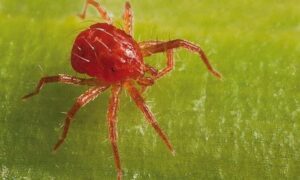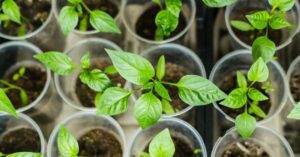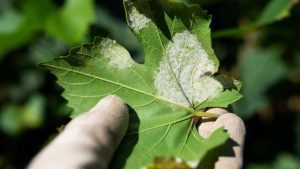In the Pea Growing Guide we explain that peas belong to the Leguminosae family, subfamily of the Papilionoideas, being its scientific name Pisum sativum L. The stems are climbing and angular; regarding vegetative development there are some varieties of determinate growth and others of indeterminate growth, giving rise to three types of varieties: dwarf, half-framed and framed. The root system is poorly developed as a whole, although it has a tap root that can be quite deep. The leaves have pairs of leaflets and end in tendrils, which have the property of clinging to the tutors that are found in their growth.
The inflorescence is racemose, with foliaceous bracts, which is inserted by means of a long peduncle in the axil of the leaves. Each cluster usually bears 1 or 2 flowers, but there are also cases of three, and even 4 and 5, although the latter are rare.
The flowers are typically papilionaceous in morphology, and have zygomorphic symmetry, that is, with only one plane of symmetry. It consists of 5 sepals, the two upper ones being variable, both in shape and dimensions, which is used as a varietal character. The pods are 5 to 10 cm long and usually have 4 to 10 seeds; they vary in shape and color, depending on the variety; with the exception of the “tirabeque”, the “valvas” of the pod have a parchment that makes them inedible.
WHEN AND HOW TO SOW
In this Pea Growing Guide we show you that it is a winter-spring crop that depending on where you live can be sown in autumn, extending its cultivation until late spring and can also be sown in January-February, reaching its cultivation until the beginning of summer. Since it is a species that tolerates low winter temperatures, including frost, the growing cycle can be adapted to the requirements of each area. Sowing is direct, at a depth of 4-5 cm, it can be done in rows or by beating, which is also done by separating the beating in the rows from 30 to 40 cm.

From the time the plants are born until flowering begins, it usually takes between 90 and 140 days, depending on the variety. The crop can be arranged in furrows or in squares, the latter system is more effective in the trellis varieties, generally snow peas, as it facilitates the work of trellising the plots.
IRRIGATION
This crop in optimal soil moisture conditions needs few irrigations. It does not need much humidity and watering should be moderate. When gravity irrigated, before sowing, it is necessary to give an irrigation so that the soil has enough moisture when it receives the seed. After that, if the crop is an autumn-winter crop, a couple of weekly irrigations are enough, and if it is a winter-spring crop, it will need 3 or 4 weekly irrigations. Always taking into account the rainfall we have in our area, the more rainfall the less irrigation.

The most important times, in terms of moisture requirements, are during flowering and when the pods are half-thickened.
HOW IT IS LEARNED
As we said before in the Pea Growing Guide, there are varieties that will need trellising or support for their growth more than others. As for forms or types of trellising there are as many as our imagination can give us… We can make from simple huts or pyramids with reeds or sticks, or put a plastic or metal mesh where they are attached with tendrils.
Remember to make the stakes large, because if your plant develops without problems you will have huge plants.

HOW AND WHEN TO HARVEST
According to the Pea Grower’s Guide we have reached the point that we like the most, the harvest of our precious peas. Here we decide how we like them, if we like them more tender or harder, if we harvest the most tender pods whole to consume them or not. Many people do not know that the pea is a plant that we can eat not only the pea itself, but also the young shoots and as I said before the pods. The young stems taste great and can be eaten raw in salads or cooked in omelets, if you have never tried it I recommend it.
As for how to harvest, I recommend that you do it carefully if you do not want to use scissors, as you can break the stems from which the pods come out.

COMMON DISEASES AND PESTS
I NSECTS.
- Pea moth(Laspeyresia nigricana). It is a dark butterfly that lays its eggs on the leaves of the flowering pea, starting in June. After a few days, the young caterpillars penetrate the pods and eat the inside of the beans, throwing the residues outside. At the end of their development, these worms measure about 13 mm in length; their body is yellowish white with a dark head.
- Green aphid(Acyrthosiphon pisum Harris). This pest affects pea vegetation, making it weaker, and even pod formation.

- Sitona(Sitona linetus L.) This is a beetle that gnaws in a very regular way the edges of the leaves, leaving them with a very characteristic scalloping; these damages are produced by the adult, but also the larvae can destroy the root nodules.
- Pea thrips (Kakothrips robustus Uzel). Its attack through its bites produces deformations of the pods and the leaflets acquire a silvery hue.
DISEASES.
- Pea powdery mildew (Erysiphe poligoni D.C.). Affected plants are covered with a whitish powder that occupies the leaflets and stipules, and even a very strong attack invades stems and pods. Subsequently, brownish spots appear on the whitish powder, which contain the spores that maintain the disease and will be responsible for the spread of the disease during the favorable phase of its development.
- Anthracnose or pea rage(Ascochyta pisi Lib.). It is a fungus that attacks stems, leaflets and pods.
- Pea Soilborne Mosaic Virus (PSbMV). It is a virus quite specific to pea, although there are strains that can affect broad beans and lentils. It originates in the leaflets an alternation of light and dark areas that give it the appearance of a mosaic. The affected parts do not develop normally and harden, and there is also a reduction in production. It is transmitted mainly by seeds, although it can also be spread by aphids, in a non-persistent way.

PRODUCTS WE RECOMMEND FOR THIS CROP


